Para leer este artículo en español, por favor vaya aquí. To read this article in Spanish, please go here.
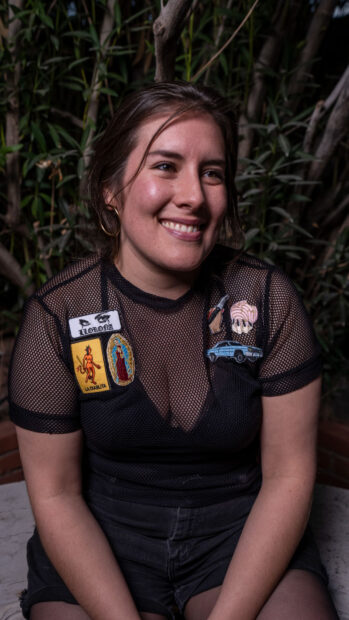
Jazmin Ontiveros Harvey
Jazmin Ontiveros Harvey is a New Mexico-based director, cinematographer, and artist-in-residence at the Border Art Residency in El Paso, Texas. She has worked on projects of all sizes and types, from social justice storytelling with the ACLU of Southern California to multimillion dollar films such as Finch and The Harder They Fall. She is a queer/Latinx artist and a member of the Local 600 International Cinematographers Guild (ICG). Her website is www.jazminharvey.com.
Nico Silva (NS): In a previous conversation you told me you identified as a cinematographer. Could you explain your relationship to art, your history with art, and how you have honed your craft over the years?
Jazmine Ontiveros Harvey (JOH): I went to film school in Las Cruces, and over the years I have continued to pursue that passion in whatever way I can. I moved to LA in 2015 and had my first experience with “Hollywood” as an Office PA (production assistant). I made the jump to Camera PA on that job because I knew that I wanted to be a cinematographer. My boss wasn’t too happy about it, but in the film industry you have to make those jumps — you can’t wait for anyone to give you permission.
In 2017 I moved to Albuquerque and started working on union sets as a camera assistant. Eventually, I joined the ICG Local 600 and because of that, I have been able to work with and observe some amazing cinematographers and directors, such as Jo Willems (the cinematographer of Finch) and Rachel Lee Goldenberg (director of Unpregnant). Off-set, I have put what I learned into practice by working on independent projects and aligning myself with other filmmakers who share a similar creative vision. I have a fraught relationship with the film industry, because I find that many of us feel a lack of community when we aren’t on set. It’s such a social space, and then when a job ends, there’s a void.
As an artist, it’s important for me to build community around and to create spaces where others can also feel inspired —this was how Queer Movie Night started. Films have an incredible power to bring people together. They have the power to transform, educate, and inspire. They shape how we see the world, and it’s been so empowering to screen films by queer directors that are totally anti-establishment and not at all “mainstream” in their thinking.
NS: The Border Art Residency in El Paso, Texas has a new home in central El Paso on Piedras street next to restaurants, bars, Galeria Cinco Puntos, and is even a 15-minute walk to Memorial Park, tennis courts, a quaint public library, and an indoor pool. Have you been able to experience things in El Paso that you wouldn’t have normally? Any good stories from the short time you have been here?
JOH: …And Coconuts [a nearby bar]! The block where the residency is located is an interesting vortex of energy. There’s so much going on in that little square. I feel grateful for the area because I have so many friends nearby and it’s close to everything. I routinely ride my bike to Memorial Park. I haven’t swam yet, but I have visited the library — did you know that they have a book sale on Tuesdays?
I would say that the biggest thing I have experienced in El Paso that I wouldn’t elsewhere is just the proximity to Mexico and the unique culture that emerges from that. I also love that almost everyone speaks Spanish, and people flow between English and Spanish seamlessly. A few months ago, before the residency, a friend invited me to the Toma Gallery. We were looking at all the amazing paintings, and meanwhile, there was Lucha Libre happening in the back room. In order to see the show, the crowd had to walk through the gallery and past all these intricate works of local art. That image has really stuck with me, because I feel like it was such an El Paso experience.
I have also been spending time in Juárez. I taught a cinematography workshop in February and later connected with Alejandra Aragón, a local filmmaker and photographer, and worked as a cinematographer on her film Skatas. My relationship to Juárez has really changed in the last year. My mom is from Mexico City and we grew up visiting every summer, but we stopped going to Juárez in 2007 because of the femicides. My relationship to Juárez has always been one of fear, and now I am experiencing other sides of the city. I am still aware of the violence, as we all are, but I am also experiencing the life, culture, and beauty that exists in Ciudad Juárez as well.
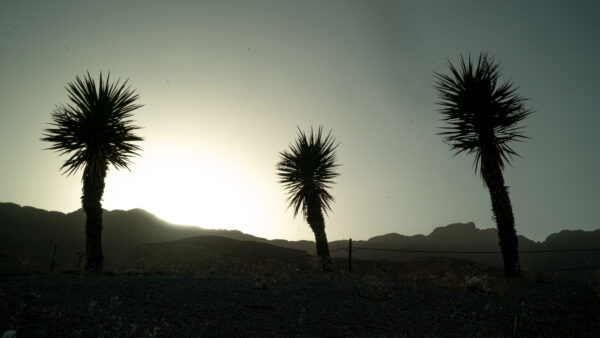
Jazmin Ontiveros Harvey, “Yucca”
NS: I definitely want to underscore how many people feel that El Paso and the border region, including Las Cruces, New Mexico, is experiencing a critical mass of art, culture and community. The Stanlee and Gerald Rubin Center for the Visual Arts at the University of Texas at El Paso and the University Art Museum at New Mexico State University in Las Cruces have both been awarded large grants and have been critical to developing the region.
You have created a driving force with the Queer Movie Nights with Xilakill-bill chilaquiles and a sober space community. Plaza Classic Film Festival, El Paso Film Festival, and El Paso Media Fest, among other events, are all great examples of how El Paso is enjoying film. Just recently in downtown El Paso, a couple opened a film cafe, Aaron and George’s Film Cafe, which is inspired by the “Fellini” cafe that closed a while back. Do you personally feel the energy I am talking about?
JOH: Yes! Absolutely! El Paso loves film! I have been to Aaron and George’s and it’s such a great place. If you haven’t been, definitely go. Film is everywhere in El Paso. I had the pleasure of assisting on a music video a few weekends ago, and through that experience I learned so much about the local film scene. There are so many production studios and rental houses in El Paso, and people who just really love film and want to make it happen.
Queer Movie Night/Noches de Cine Queer has been a really important project because it’s providing an alternative film space where queer people and allies can come together and see their history, experiences, and stories on screen in a safe, sober space. So far we have seen The Whistle by StormMiguel Florez, a collection of nine queer short films from Tijuana,* Mexico, including Lenchas y Marimachas by Liliana Hueso, and most recently we watched Querida Nancy by Olivia Peregrino. It’s been a good run so far! I hope that more alternative film spaces emerge, because it’s so important to make sure that everyone is included as the film industry grows in El Paso. It is still a very male-dominated industry, and I think a lot of women and queer folx are intimidated or turned-off by that. In the same way that this culture tells women we’re bad at math, it also tells us that we don’t have the “technical skills” to be cinematographers, gaffers, grips, etc.
These gender roles play out on set — women get pigeon-holed into hair, makeup, art, or production. Meanwhile, men fall into being grips, electricians, cinematographers, and directors. As a queer woman working in camera, I feel a responsibility to empower other women and let them know that there is a space for us in film, and that any craft can be learned and practiced. As the industry grows in El Paso, Las Cruces, Albuquerque, and Santa Fe, it’s important to uplift unique and diverse stories, and have that diversity reflected in the crew.
*Films that made up the program from Tijuana included: Trans-Signs by Jessika Zamacona, El Alamar Vive by Carolina Prado Torres, Mascara del Dia by Ich Cntno, Michael by Irma Gomez, Bloody Cool by Crystal P. Lira, Transitando by Eme Rivera, Conmigo by Dan F., Ama by Ele Valenzuela.
NS: Have you been able to enjoy the wider arts happenings, like the Salvador Dalí and Ho Baron exhibitions at the El Paso Museum of Art, Chalk the Block, or Dia de los Muertos events?
JOH: I haven’t been to the Savidor Dali or Ho Baron exhibitions yet, but I’m so excited for them. A few weeks ago, I attended the shorts program at the El Paso Film Festival, and before that I went on a walking tour of the Segundo Barrio led by the historian David Romo and musical performer Adriana Lopez. It ended in Duranguito, where we met with Toñita (Antonia Moralez). For readers who aren’t familiar with her struggle, Toñita is 93 years old and is one of two remaining residents in the historic Duranguito neighborhood in El Paso. In 2016, developers began buying out the residents of the neighborhood with the plan of demolishing the area and building a sports arena from a Quality of Life bond. This has led to a long legal battle and an expensive consulting firm being hired by the city.
Toñita is a powerful woman who has refused to leave, despite threats to shut off her electricity and water. She spoke with us about her commitment to her neighborhood, and stressed that if she can do it at 93, not knowing a word of English, then young people in El Paso can achieve so much for their communities.
That same week, I attended the celebration of Indigenous People’s day in Duranguito, where David and Adriana Lopez performed, along with other local poets and writers. I’m really interested in the power of art in community activism, so seeing their performance was really inspiring. I’m planning on being in Duranguito for Dia de los Muertos, as well as visiting events at Flor de Barro Gallery and Cinco Puntos Gallery.
NS: As a social worker and artist, I understand how identity and lived experience may inform artistic practice. Could you comment on your identities and lived experiences and how they have informed your creative work, especially your personal projects?
JOH: My work, at this stage, is all about identity. I have been experiencing a lot of big life changes during my residency, so I feel like I am being reborn in a sense. As an artist, I try to tap into the most genuine part of myself. I have been working on a script during my time in El Paso, and I am also seeing how that story is evolving and changing. The story I wanted to tell a year ago is not the story that I want to tell now, and I’m embracing that.
As far as my background, my parents are both immigrants. My mom is from Mexico City, my dad is from the UK, and my sister and I grew up in Las Cruces. There was always a sense that we might move or live somewhere else one day. As kids, we lived in San Cristobal de las Casas, Chiapas for one year, and then during my senior year of high school we moved to Oxford, England. Through my art, I want to explore that sense of un-rootedness and make peace with the different parts of me.
I am especially interested in talking about white Latinidad and code-switching. As a white Latina who grew up in the U.S., I have seen firsthand how much privilege I have in comparison to my mom, who is light-skinned but unable to code-switch. I am still learning so much about myself and my Latinidad. In my own storytelling, I highlight colorism in the Latinx community and how white Latinos have the unique privilege of code-switching and assimilating to whiteness or not. There is an in-betweenness of being brown in the U.S. but being white in Mexico, and it reveals a lot about the social construction of race. There’s an excellent conversation between Maria Garcia and Maria Hinojosa on NPR’s Code-Switch podcast where they discuss the complexities of white Latinidad and privilege.
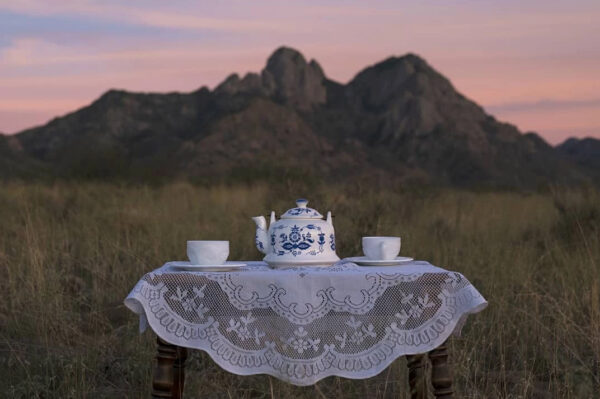
Jazmin Ontiveros Harvey, “Hora de Té”
NS: How important is it that the borderlands and its people tell their own story?
JOH: It’s so important for people from here to tell their own story so that we can have more unique and diverse perspectives on screen. Film is such a powerful medium, so much so that it shapes people’s opinions of the world around them. It’s infuriating to know that so many of the narratives we have are made from the perspective of white cis men.
When it comes to the topic of outsiders coming in, the first film that comes to mind is Sicario. It’s been years since I watched it, but I remember feeling like Mexico itself was a villain in the story. The music and sound design reinforced that messaging — every time there was a shot of Mexico, there would be a low, menacing rumble. In contrast, the U.S. was depicted as “safe.” It completely ignores the fact that the United States’ militarism, imperialism, and demand for drugs has played a central role in destabilizing Central America and Mexico. The film is a representation of the minds behind it, and when people don’t actually have an emotional or personal tie to the topic at hand, they risk falling into two-dimensional stereotypes and perpetuating that violence on screen.
It’s a complicated question, because at the same time, outsiders can bring in a different perspective. However, when it comes to outsiders making films about border-specific topics, there is an ethical responsibility to be accountable to the community.
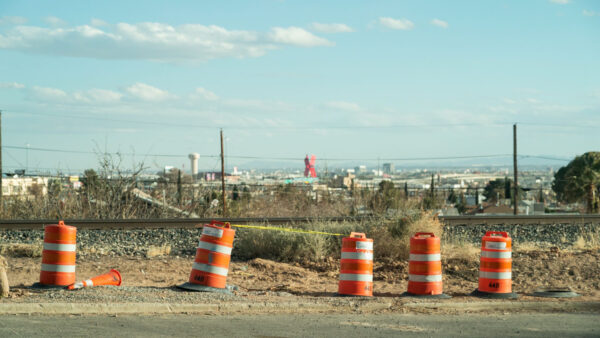
Jazmin Ontiveros Harvey, “La X”
NS: In our previous conversation you mentioned that you have found many willing and warm collaborators in the region. Could you talk about that, and have you produced anything from it?
JOH: Something I love about the art scene in El Paso is the feeling of community — there’s a strong spirit of collaboration, and community support for the arts is everywhere. I’m continually inspired by Manuel Urueta of Xingaderas & Xilakill-bill, who has been so welcoming and is very much someone who believes in the spirit of collaboration. The photographer Ingrid Leyva is another pillar of the artistic community here in El Paso/Juarez, and I am grateful for her support. Her photo project Mexican Shoppers has been deeply inspiring to me because of the way she was able to express something so human in a setting as violent as the U.S./Mexico Border crossing (the violence I am referring to is the border — a man-made border that is a violence against the people who cross it every day).
I mentioned earlier that I worked on a music video this past weekend, and it was a really amazing experience. It was for a band called the 1-800, directed by Daniel Fuentes and shot by cinematographer Celina Galicia, both of whom are amazing filmmakers. I have also met a lot of people through Queer Movie Night, and there are definitely a few projects brewing, but I’ll have to keep you posted.
I also had the opportunity to collaborate with the Philosophic Systems Institute (PSI) and Bella Maria Varela, a previous Border Arts Resident, in co-organizing a workshop for kids who are part of a transformative learning program in Segundo Barrio. We had a movie night at the gallery space on Piedras, where we all ate dinner and watched Seeds (Directed by Morningstar Angeline and Ajuawak Kapashesit, Cinematography by Jazmin Harvey). Afterwards, we had a screenwriting exercise where the kids wrote themselves as the main characters of their stories. The goal of the program is to teach them different ways of expressing themselves, so it was exciting to share with them what they can do through film, and to see how empowered they were by the idea of seeing their story on screen.
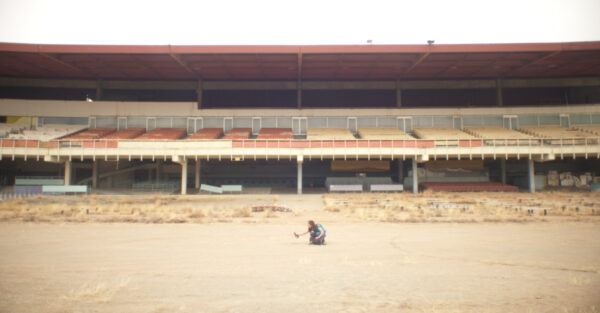
Still from “Seeds,” Directed by Morningstar Angeline and Ajuawak Kapashesit. Cinematography by Jazmin Harvey.
NS: Do you have any advice or perspective for young artists wanting to pursue film and cinematography?
JOH: Watch films and work on as many movies as you can. Pick up a camera and make your own movie, even if it’s on your cell phone! Try different jobs, and work your way up. Work on leadership skills and support the other filmmakers and artists around you. The more you know about how a set works, the better you’ll be at delegating and problem solving on your own projects.
It’s also vitally important that you find people who you align with —reach out to those people, work with them. Early in my career, I often had the experience of being the only woman on set, which was very isolating. It was important for me to find allies and people who see me for who I am. Believe in the stories that you want to tell, and be proud of your art.
NS: Anything else you would like to add? Also, on an important closing note, what have you enjoyed food-wise in El Paso?
JOH: I’m really grateful to be in El Paso as the Border Arts Resident and to be folded into such a beautiful community. As far as food goes — I had amazing tacos at Love Buzz the other night, and you can’t ever go wrong with a suadero taco from Taconeta! Cafe Mayapan…Cafe con Leche…JVB’s…there are so many delicious options!
This interview has been lightly edited for length and clarity.
Nicolas “Nico” Silva is a PhD student in Biosciences, a licensed master social worker, artist, and writer, and envisions a future where the arts and artists are supported to their fullest potential. You can follow him @nicosilvasw.


